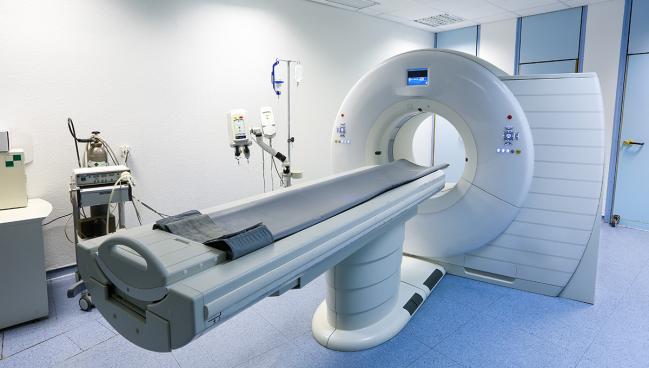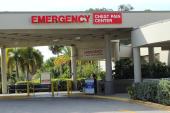CMS Proposes Increased Reimbursement for Cardiac CT Angiography
Reimbursement doesn’t currently cover costs of the test, but that could change if CMS ties payment to a cardiology revenue code.

After years of declining reimbursement, the US Centers for Medicare & Medicaid Services (CMS) has proposed an increase in the amount paid to hospitals and outpatient clinics for cardiac computed tomography angiography (CCTA).
Current CMS reimbursement for CCTA—included in a class 1 recommendation for the exclusion of obstructive coronary disease in the latest clinical guidelines for stable and acute chest pain—is approximately $175. That amount would double under the new proposal.
The problem pertains to the way CCTA is coded using the Hospital Outpatient Prospective Payment System (OPPS), said Ferencik. Under the new proposal, hospitals and outpatient clinics would be allowed to submit charges for cardiac CT services using a cardiology revenue code, when appropriate, instead of under of the current CT scan or radiology diagnostic revenue codes. CCTA, he said, is a more expensive test to administer than chest CT, which is basically how it’s currently reimbursed.
The increase in reimbursement, said Ferencik, is important because it means that CCTA might become more economically viable for hospitals and increase the number of centers capable of administering the diagnostic test.
“It’s critical since we know from our surveys and research that it's the rural population, the underserved population, [and] the population with a lower socioeconomic status that have more difficult access to cardiac care,” he said. “This move could help deliver cardiac CT angiography and its benefits to all patients.”
Declines Since 2017
Last year, the American College of Cardiology and American Heart Association published new guidelines endorsing the use of CCTA in patients presenting to the emergency department with chest pain. For those with suspected ACS, patients should be triaged into low-, intermediate-, and high-risk categories, and for the intermediate-risk patient without known coronary artery disease, CCTA is recommended for excluding atherosclerotic plaque and obstructive CAD.
Since 2010, hospitals and outpatient clinics have submitted charges for cardiac CT services using three main billing codes as part of the OPPS:
- 75572: Heart CT with contrast for evaluation of cardiac structure and morphology
- 75573: Heart CT with contrast for evaluation of cardiac structure and morphology in the setting of congenital heart disease
- 75574: CT angiography of the heart, coronary arteries, and bypass grafts with contrast
In 2017, the OPPS payment rate for the three billing codes was $265.02 but by 2024, the reimbursement rate had declined to $175.06.
“Commenters have indicated that the payment amount is insufficient to cover the cost of providing the service and have stated that the payment amount does not consider the hospital resources required to perform these services, including the use of the equipment, medication administration, staff time, and scanner time,” according to the proposed rule from CMS.
The potential bump in reimbursement, said Armin Zadeh, MD (Johns Hopkins Medicine, Baltimore, MD), is nothing short of monumental. “It’s going to make a huge difference in terms of the numbers of patients receiving cardiac CT,” Zadeh told TCTMD.
He noted that a disproportionate number of patients with stable chest pain are still sent for stress testing, which is also a class 1 recommendation for the diagnosis of ischemia in intermediate-risk patients. “There are multiple reasons why it’s so lopsided, but particularly it’s the poor reimbursement for CT,” he said.
Reimbursement for nuclear stress testing is higher, he added. “It takes half the time to read and you’re getting more money for it,” said Zadeh. “Cardiologists also have poor access to cardiac CT because the equipment costs are much higher. If you buy a CT scanner, it’s $1 or $2 million, and you can’t do enough scans just to break even.”
It’s going to make a huge difference in terms of the numbers of patients receiving cardiac CT. Armin Zadeh
Ron Blankstein, MD (Brigham and Women’s Hospital, Boston, MA), director of the cardiac CT program at his institution, said that “no hospital is trying to make money off these tests—they just want to make sure they’re not losing money.”
Ferencik noted that larger hospitals and academic medical centers can offset losses from CCTA with other tests, but smaller hospitals don’t have such resources. Whether the proposed payment fully covers the cost of the test depends on the healthcare system, said Ferencik, “but it comes a lot closer to the cost of the test.”
What’s Best for the Patient
The current proposal doesn’t affect the professional fee, which is what the physician is paid, said Blankstein. The increased payment from CMS would cover the resources hospitals use, such as the cost of the scanners; ancillary staff, including the technologist trained in cardiac CT; medications such as nitroglycerin or beta-blockers given before the procedure; and staff required to monitor patients.
He emphasized that physicians are simply aiming to do what’s best for their patient, including getting them access to the most appropriate testing. “Physicians don’t decide to order a scan or not based on the reimbursement to the hospital,” he said. “Sometimes that decision is agnostic of the payment to the hospital or even the physician, for that matter.”
Zadeh, who also is the director of cardiac CT program at his center, is hopeful the increase in payment will lead to more balanced use of CCTA in stable chest pain patients. “I cannot overemphasize how critical this proposal is,” he said. “Now, we have to do everything we can just to make sure it actually will go through.”
The current proposal is open for public comment until September 9, 2024. CMS wants to know whether 50% or more of hospital outpatient departments are using, have attempted to use, or plan to use the cardiology revenue code for CCTA if allowed. If that’s the case, the reimbursement would change to reflect the CMS’ valuation of CCTA.
“I think a very important point is that the revenue code that's assigned to a test when those charges are submitted to CMS has nothing to do with where a test is physically done,” said Blankstein. “Whether we call it a cardiology department or a radiology department, it has nothing to do with whether the test is actually being performed by a cardiologist or radiologist, but it has everything to do with the resources that are utilized when the test is performed.”
Michael O’Riordan is the Managing Editor for TCTMD. He completed his undergraduate degrees at Queen’s University in Kingston, ON, and…
Read Full BioSources
Centers for Medicare & Medicaid Services. CY 2025 hospital outpatient PPS policy changes and payment rates and ambulatory surgical center payment system policy changes and payment rates. Published on: July 10, 2024. Accessed on: August 16, 2024.





Comments